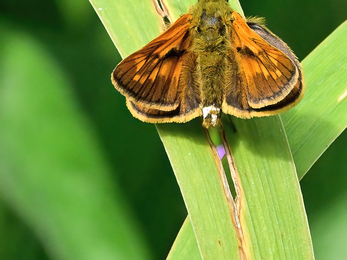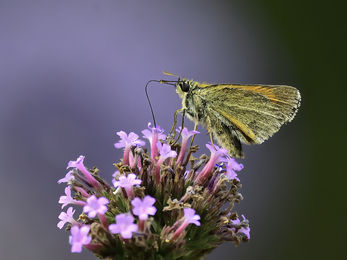There is nothing in a caterpillar that tells you it's going to be a butterfly.
A Butterfly Bonanza!
I can remember the summer of 1976. I was between Uni and work at the time, so I spent the days lounging around my parent's garden, drinking tea, eating ice-cream and watching the butterflies. Almost half-a-century on and little has changed (other than the sunhat now needed to cover my bald patch). Whilst this year's summer hasn't quite reached the dizzy heights (or drought-condition lows) of '76, the long dry spells have been more than sufficient to leave our 'green, green grass of home' looking decidedly beige! This year too, for the first time in decades, it's also been butterfly central. Here's what to look out for in your gardens, until autumn spoils the party...
The Big Three: If it's garden glamour you're after, the peacock, red admiral and small tortoiseshell deliver the goods with their eye-catching colour combinations. Which is the most beautiful? Only you can decide! As Margaret Wolfe Hungerford once said, “Beauty is in the eye of the beholder."
The Cabbage Whites: So named due their caterpillar-phase penchant for munching your brassicas. The large white and small white are easily confused; the large though has a continuous line of black running along the outer edge of it's forewing. The green-veined white is easily identified. If you get a decent look at it's rear underwing, you’ll see the distinctive markings which remind me of varicose veins.
The Browns: The comma butterfly looks like it's wings have been chewed around the edges. They appear terracotta-coloured in the evening light and derive their name from the single white mark on their underwings.

Comma butterfly - Rob Bendelow
The speckled wood prefers partially shaded woodland with dappled sunlight, so if your garden offers those conditions they'll be very happy to pay you a visit. The meadow brown is one of our most abundant butterfly species; a regular garden visitor, often out flying even in dull weather when other species are inactive. Gatekeepers are not dissimilar to meadow browns, but smaller, more orangey and with double white dots in their forewing black circles.
Beautiful Blues: These butterflies may only have a wingspan which is little more than 3cm but they're head-turners for sure with their vibrant colouring. Telling the common blue from the holly blue, however, requires a decent glimpse of their underwing markings, which are very different. Hopefully my snap-shots illustrate this...
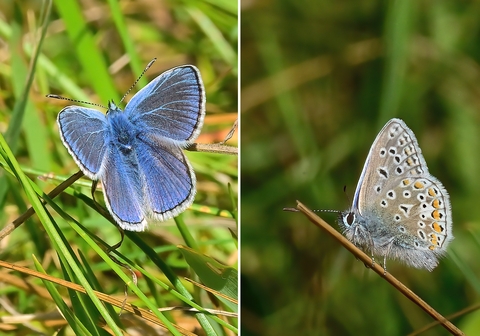
Common blue butterfly - Rob Bendelow
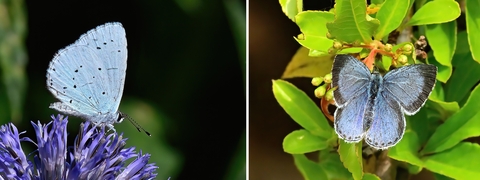
Holly blue butterfly - Rob Bendelow
Aye aye Skipper: At a casual glance, you'd be forgiven for mistaking these small, delta-shaped butterflies for large brown flies. Skippers are insects of high summer. They are marvellous flyers, manoeuvring expertly through tall grass stems. It is these darting flights, wings glinting golden-brown in the sunlight, that normally alert an observer to their presence. The large skipper has a faint chequered pattern on both sides of the wings, distinguishing it from the similar small skipper. Both species could visit your garden.
Painted Lady: A well-travelled migrant (to say the least!), the painted lady arrives here every summer from Europe and Africa. This beautiful orange-and-black butterfly regularly visits gardens. I just can't begin to understand how something so small and fragile can make such a journey successfully! Thankfully they do, and I've seen a few here at home this summer. Unlike the other large, colourful butterflies, they are truly attractive on both their upper and lower sides.
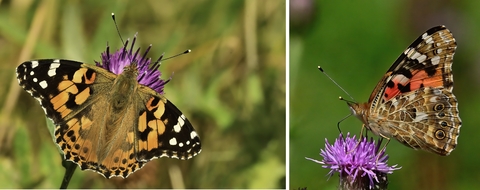
Painted lady butterfly - Rob Bendelow
Hummingbird hawkmoth: Not a butterfly of course, but a stunning summer spectacle none the less! And one which is causing a stir with sightings all around Staffordshire. Like yours truly, you probably think of moths as being creatures of the night? Rightly so, but this remarkable insect is a daytime flier. You’d be forgiven too for mistaking this beautiful moth for a tiny hummingbird (hence its name) as it flits speedily between flowers, hovering as it extracts the nectar. It's wings beat 80 times every second - I'm exhausted just thinking about that! They regularly visit gardens on their nectar-hunt; I grabbed these pics here in our garden recently...
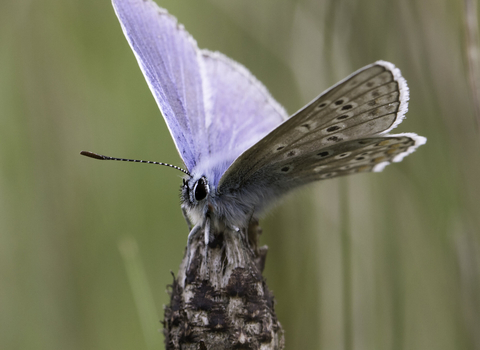
false - Chris Lawrence
Take part in the Big Butterfly Count
Here's hoping you continue to enjoy the summer...and all these much-loved garden visitors. Be sure to take part in the count!











